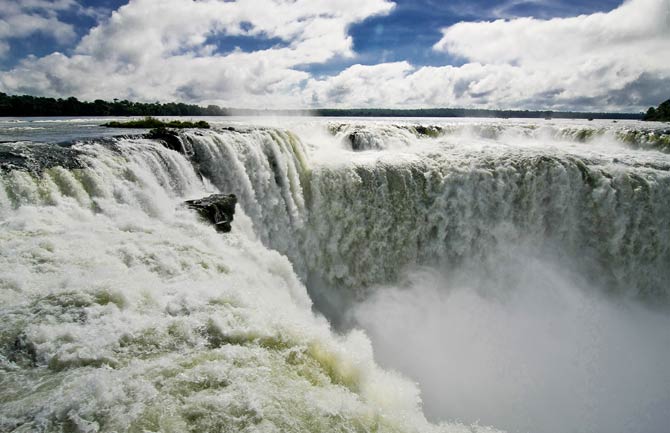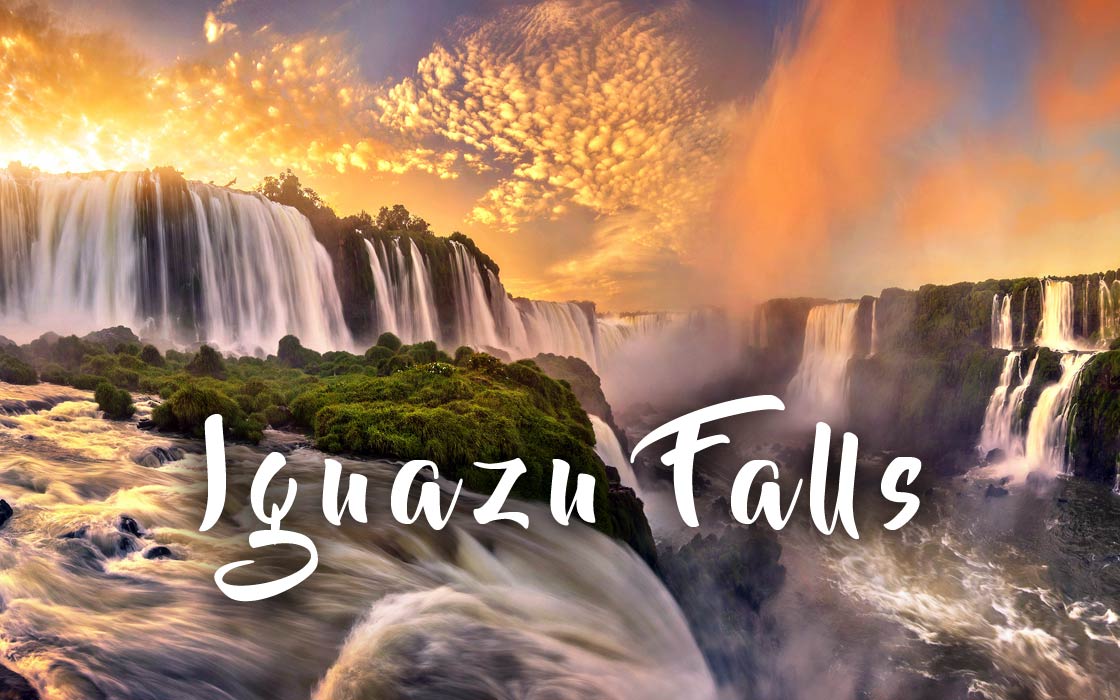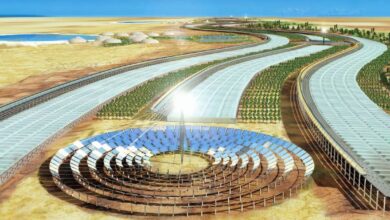Iguazu Falls – one of the largest waterfalls
Iguaçu Falls, Cataratas del Iguazú, Cataratas do Iguaçu
Apparently, when Eleanor Roosevelt – the First Lady of the United States – saw the Iguazu Falls, she shouted, “Poor Niagara!”. It is true that the Iguazu complex is larger than Niagara. However, it is difficult to compare them, because both objects are equally dignified and full of power.
This time we will deal with the South American giant, surrounded by lush vegetation, eagerly watered by a water mist – a “by-product” of the Iguazu Falls – one of the largest waterfall systems in the world.
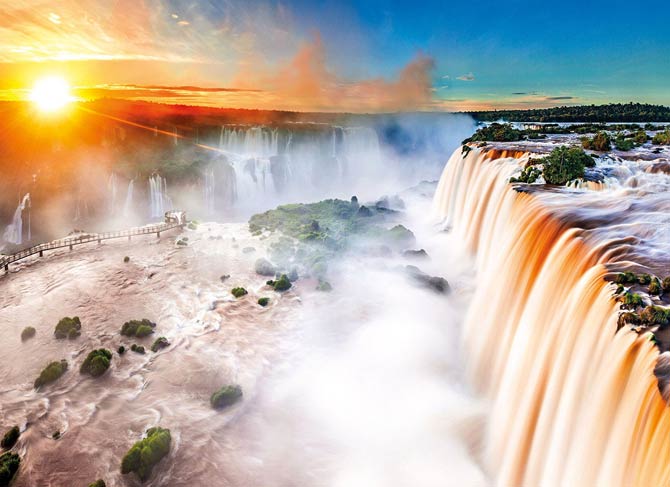
Location
The Iguazu waterfall system adorns the border between Argentina and Brazil. It is located on the natural border between these countries – the Iguazu River, which in turn is an important tributary of the larger South American river – Parana.
Most of the waterfalls (about 80%) are on the Argentine side. The part located in Brazil is under the protection of the Iguaçu National Park, while the Argentine part belongs to the Iguazú National Park.
The waterfalls are located in the middle of the river, which gave rise to myths and legends among the indigenous people of South America.
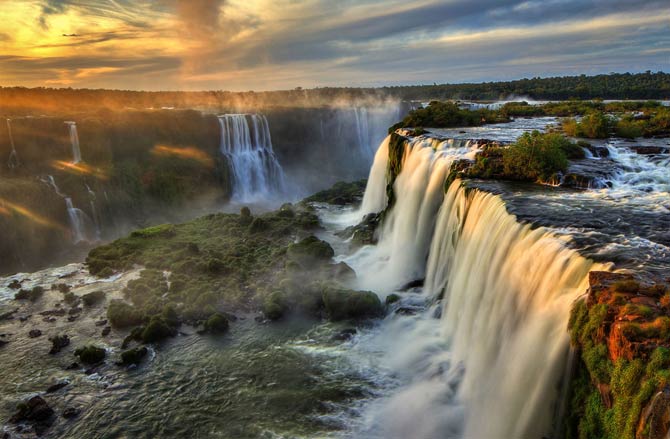
European discovery
The European discoverer of Iguazu was the Spanish conquistador, Álvar Núñez Cabeza de Vaca. He is believed to have arrived there in 1541, while traveling inland from Santa Catarina Island. Near the waterfalls, a plaque was erected to commemorate de Vaca as the first European to see the Iguazu Falls.
Dimensions
Iguazu has 275 water thresholds that make up the world’s largest system of its kind.
The complex is 2.7 km wide, while the height ranges from 60 to 82 m. A significant part of the waterfalls in the so-called Devil’s Throat / Devil’s Gullet (Spanish: Garganta del Diablo), resembling an inverted letter “U”. It is the largest Iguazu cascade, 82 m high, 700 m wide, and 150 m long. Approximately 900 m from 2.7 km are rocks through which no water can drift.
The most famous waterfalls included in the Iguazu complex are: San Martín, Rosetti, Deodoro, Floriano and others.
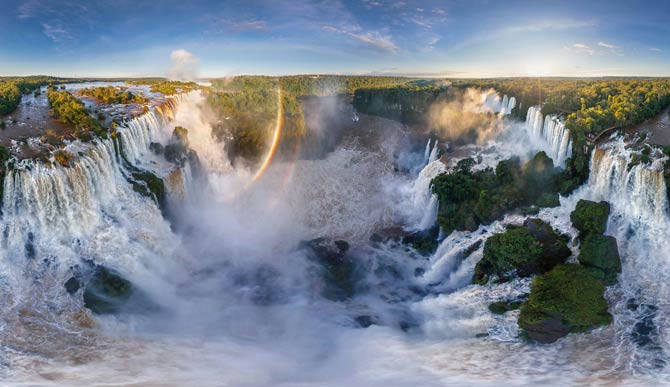
National parks
Within the Iguazu Falls, two national parks have been established – one in Argentina and the other in Brazil. They are called Iguazú and Iguaçu respectively.
Iguazu
It is located in the northern part of the Argentinean province of Misiones, in the area of the so-called Argentinian Mesopotamia (Argentinean Mesopotamia – the Greek name Mesopotamia means “the land between the rivers”).
It was founded in 1934 and it hides the Argentinian part of the Iguazu Falls and the surrounding jungle under its wings.
About 10,000 years ago, the area was inhabited by a people of hunters and gatherers, but they were supplanted by the Guarani with an agricultural culture. These, in turn, were displaced by the Spanish and Portuguese conquistadors in the 16th century. The Guarani Indians owe the name of the waterfalls (Chororõ Yguasu). Originally it means “big/great water” (y means “water” and űasú translates as “big”).
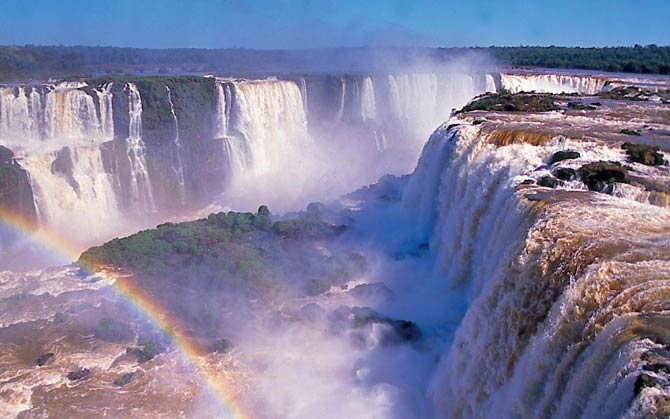
Animals
In the area of the Park, approx. 670 km2, we meet rare species of animals: exotic jaguarundi, mysterious jaguars, beautiful ocelots, solitary American tapirs, plain parakeets (Brotogeris tirica) (endemic species of parrots), charming swifts of the Cypseloides senex species, colorful toucans, clever yacare caimans, various butterflies.
Plants
The banks of the Iguazu River and the waterfalls are densely overgrown with Erythrina crista-galli, the flowers of which are the national treasure of Argentina. There are also plants from the toinaceae and bignoniaceae families in the Park.
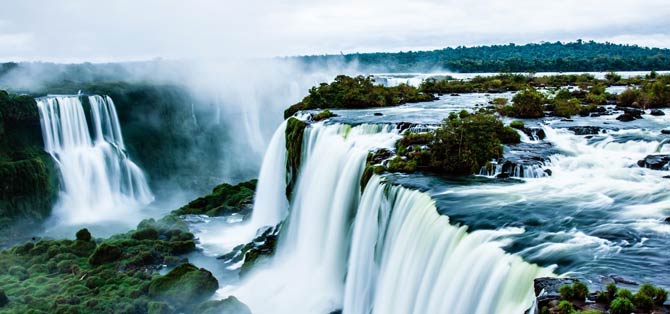
Iguaçu
Equivalent to the Argentinian Iguazú National Park, located in the Brazilian state of Parana. It has a much larger area than its “neighbor” – it amounts to 1700 km2.
It was established in 1939, that is 5 years after the founding of the Argentinean park.
In the Iguaçu National Park, there is the longest species of otter in the world – giant otter, and the giant anteater – the largest representative of the anteater family. The fauna and flora in both parks are very similar to each other, because they have the same, humid subtropical climate.
Climate
Heavy rainfall and high temperatures prevail there almost all year round. Dry periods usually last only a few weeks, although in the summer of 2006 the drought extended until the beginning of December, reducing the water flow in the waterfalls to approx. 300 m3/s (the average flow is 1756 m3/s).
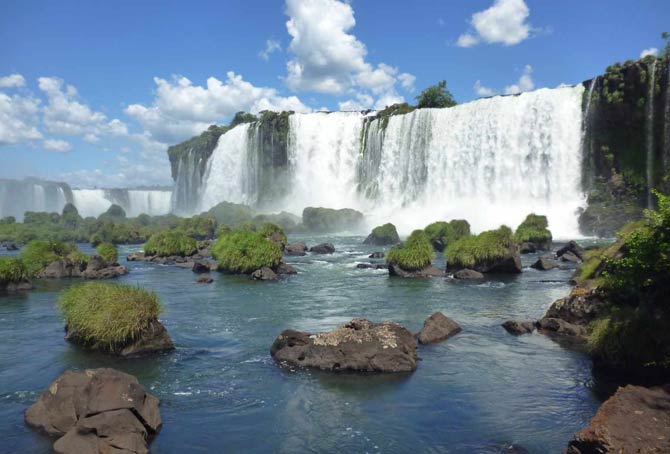
Detailed data / dimensions
Iguazu Falls
- Height: 60-82 m
- Width:7 km
- Highest cascade: Devil’s Throat
- 82 m high (269 ft)
- 700 m wide
- 150 m long
- Records: the largest waterfall system in the world
- Number of waterfalls: 150-300, depending on the water level
- Average flow: 1756 m³/s
- The noise of the water is audible within 20 km
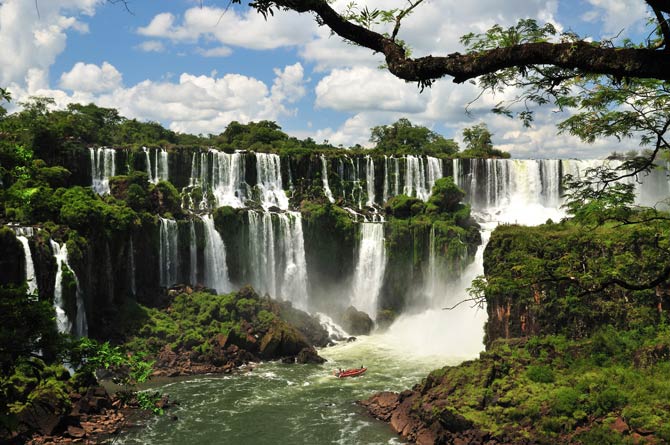
Iguazu Falls – interesting facts
- Legend has it that one of the deities planned to marry a beautiful woman named Naipi, who escaped in a boat with her human lover Tarobá. The enraged deity cut the riverbed creating waterfalls from which damned lovers would fall for all eternity.
- The Devil’s Gorge runs across the border between Brazil and Argentina.
- There are two international airports near the Iguazu Falls: one in Argentina and one in Brazil.
- In terms of average water flow, Iguazu Falls are 6th – behind Niagara Falls, ahead of Victoria Falls.
